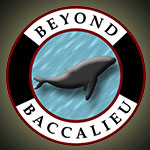
The History of Baccalieu Island Ecological Reserve
 |
The History of Baccalieu Island Ecological Reserve |
Baccalieu Island is one of the earliest mentioned places in the historical records with respect to the New World. On the map of the world dated 1508 by Johannes Ruysch, Newfoundland appears as "Terra Nova" and is attached to Asia. On the eastern part of the pensinsula are the words "IN BACCALAURAS", "In" being short form for "Insula" or island, and "Baccalauras" meaning codfish. There is no doubt that this is a representation of Baccalieu Island, making it the longest lived geographical name associated with Canada.
There is evidence from the commentary which accompanied the map when it was published, written by Marcus Beneventanus, an Italian monk, that the author of the map had actually visited the New World, and this representation was from first hand knowledge. It is widely believed by historians that it was with John Cabot that Ruysch sailed, and his map incorporates knowledge gained likely from his 1497 voyage (as Cabot was never heard from again after his second voyage in 1498, and there is speculation his ship was wrecked and never returned).
In this commentary by Beneventanus, he writes "he (Ruysch) sailed from the South of England and penetrated as far as the 53rd degree of North latitude and on that parallel he sailed west toward the shores of the East, bearing a little northward and observed many islands". The port he sailed from was likely Bristol, and from the description of the voyage, which mirrored Cabot's reported route, it has been concluded that it is Cabot's discoveries which are documented on the 1508 map.
The island of Bacalaos ("codfish") appears on maps of the time thereafter. Cabot is also thought to have landed in Grates Cove on his second voyage, from which he never returned. Local mythology says that a earring belonging to his son Sebastian was found in Grates Cove. For more information on the Cabot Rock in Grates Cove and its mysterious disappearance, go to our "About Grates Cove" page
The first colony established in Newfoundland was in Cuper's Cove (Cupid's) by John Guy in 1610, and there are letters dating from that time regarding his party's activities. Such a letter from Henry Crout to Sir Percival Willoughby dated April 10, 1613 mentions a trip into Trinity Bay, and their visiting Green Bay (Bay de Verde) and their desire to go ashore to hunt caribou, as it is "hard by Backaloo".
If you are interested in the early history of the Baccalieu Trail, particularly regarding the Beothuks, early settlers and pirates, please visit the very worthwhile site of the Baccalieu Trail Heritage Association. They are conducting archaelogy digs around the Baccalieu Trail, and would be worth including in your visit to the area.
The first lighthouse was built on Baccalieu Island in 1858. It was operated by the Ryan family for almost 100 years, and it is still functional today.
The waters around Baccalieu have seen many a shipwreck throughout history, including the Mollie which met its tragic end in Grates Cove. Its waters were also visited by real pirates like Peter Easton, and who knows what kind of treasure might be buried on Baccalieu? Puffins and petrels may not be the only visitors digging burrows on this remote and rugged island!